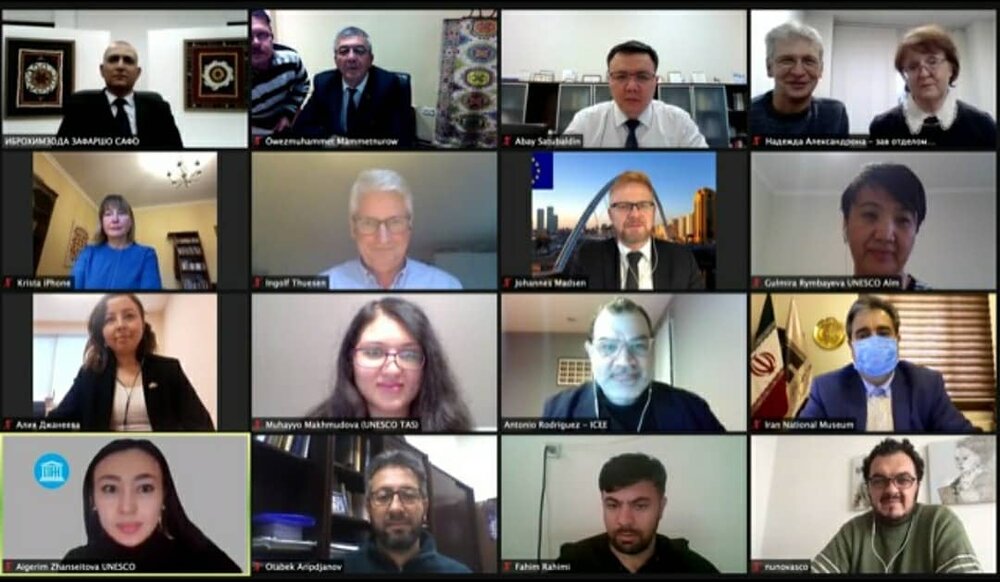Iran, neighbors explore ways to safeguard Silk Roads heritage

TEHRAN – Cultural experts and officials from Iran and some neighboring states on Thursday discussed ways to safeguard, and benefit from the cultural heritage their nations are inherited from the ancient Silk Roads.
The third webinar of a joint traveling exhibition on the Common Heritage along the Silk Roads brought together experts from the Islamic Republic, Afghanistan, Tajikistan, Turkmenistan, Kazakhstan, Kyrgyzstan, and Uzbekistan.
The online seminar was coordinated by the UNESCO Regional Office for Central Asia in Almaty on the traveling exhibition: Silk Roads Heritage Corridors in Afghanistan, Central Asia, and Iran with the support of the European Union.
Participants included museum directors and their deputies from the museums of the seven countries, representatives of the Department of Cross-Cultural and Regional Studies of the University of Copenhagen, ICOM International Exhibition Committee (ICOM), and the director of The UNESCO Almaty Office and the Chairman of the European Union Delegation to the Central Asia Region based in Kazakhstan.
The process of holding a joint traveling exhibition, related strategies, creating a network between participating national museums with the aim of empowerment through online training and exchange of successful experiences by holding workshops were discussed.
The event aimed to raise awareness about the rich heritage of the participating countries, to promote the exchanges of good practices along the Silk Roads, and to promote common understanding about the Silk Roads heritage as a bridge between the East and the West.
The ancient roads existed for thousands of years, passing through many different empires, kingdoms, reigns, and societies throughout history. At certain times in its long history, traders could travel freely along these routes, whereas at others, travel was difficult or dangerous.
According to UNESCO, the Silk Roads enriched the countries it passed through, transporting cultures, religions, languages, and of course material goods into societies across Europe, Asia, and Africa, and uniting them all with a common thread of cultural heritage and plural identities.
AFM/
Leave a Comment